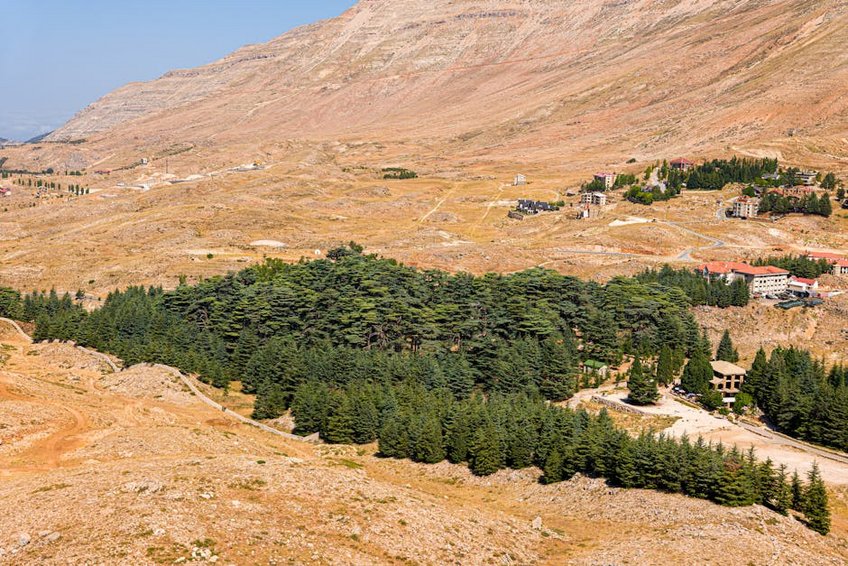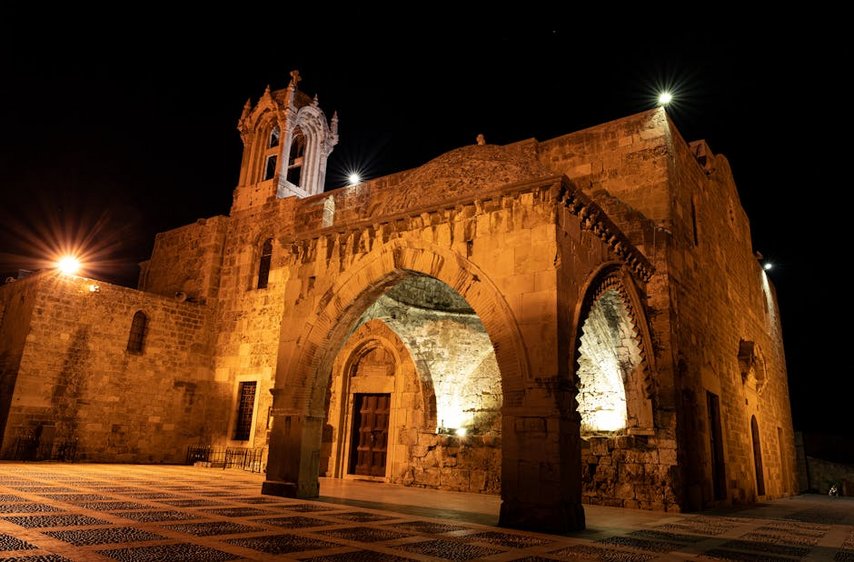Lebanon Cedars of God Forest: Your Ultimate Travel Guide to Ancient Natural Wonders
Exploring the Lebanon Cedars of God Forest is like stepping into a living piece of history, where ancient trees have stood for millennia in the mountains of Lebanon. This UNESCO World Heritage site, located near Bsharri, features some of the oldest cedar trees on Earth, with many specimens over 1,000 years old, and holds deep cultural and religious significance. As you wander through this serene forest, you’ll be surrounded by the iconic Cedrus libani trees, which have symbolized resilience and beauty in Lebanese culture for centuries. The Lebanon Cedars of God Forest offers a unique blend of natural splendor and historical depth, making it a must-visit destination for nature lovers and history enthusiasts alike. You’ll find yourself immersed in a tranquil environment where the air is fresh, the scenery is breathtaking, and the sense of peace is palpable. Whether you’re seeking adventure, spiritual reflection, or simply a escape from urban life, this forest provides an unforgettable experience that connects you to Lebanon’s rich heritage. In this guide, I’ll walk you through everything you need to know to plan your visit, from practical tips to hidden gems, ensuring you make the most of your journey to this majestic natural wonder.
Lebanon Cedars of God Forest – Essential Information for Your Visit
Before you set off to the Lebanon Cedars of God Forest, it’s crucial to understand its background and what makes it so special. This forest is part of the larger Ouadi Qadisha (Holy Valley) UNESCO site, covering approximately 10 square kilometers in the Mount Lebanon range, with elevations ranging from 1,800 to 3,000 meters above sea level. The cedars here are not just trees; they’re living monuments that have been referenced in ancient texts, including the Bible, where they were used in the construction of Solomon’s Temple. As you plan your trip, note that the forest is protected under Lebanese law, with conservation efforts in place to preserve these giants from threats like climate change and deforestation. You’ll discover that the area has a Mediterranean climate, but at higher altitudes, winters can bring snow, adding to the magical atmosphere. I recommend checking the official visiting hours and any seasonal closures, as access might be limited during heavy snowfall or maintenance periods. This foundational knowledge will help you appreciate the depth of your experience and prepare adequately for the adventure ahead.
What Are the Cedars of God? – Key Facts and History
- The Cedars of God refer to a grove of ancient Cedrus libani trees, with some estimated to be over 3,000 years old, making them among the oldest living organisms in the region.
- Historically, these trees were highly prized for their durable wood, used in shipbuilding and temples by Phoenicians, Egyptians, and other ancient civilizations, contributing to Lebanon’s economic and cultural legacy.
- Today, the forest is a symbol of national pride and environmental conservation, with ongoing reforestation projects to ensure future generations can enjoy this natural treasure.
- Budget option: Aim for $50-100 USD per day, including hostel stays, public transportation from Beirut (around $10-20 USD round trip), and self-guided tours with packed meals.
- Mid-range option: Plan for $100-200 USD per day, covering hotel accommodations, rental car or private transfers, guided tours (approximately $30-50 USD), and meals at local restaurants.
- Luxury option: Expect $200-400 USD per day, featuring boutique hotels, private guides, exclusive experiences, and fine dining, ensuring a comfortable and immersive visit.
- Lebanon Ministry of Tourism Official Site
- UNESCO World Heritage Centre – Ouadi Qadisha and the Forest of the Cedars of God
Cultural and Religious Significance – Why It Matters
The Lebanon Cedars of God Forest holds profound cultural and religious importance, deeply rooted in Middle Eastern history. In Christianity, the cedars are mentioned multiple times in the Bible, often symbolizing strength and eternity, which adds a spiritual dimension to your visit. For locals, these trees represent resilience and identity, having survived centuries of change, including Ottoman rule and modern conflicts. As you explore, you’ll notice that the forest is a pilgrimage site for many, blending natural beauty with sacred symbolism. This cultural richness enhances the experience, allowing you to connect not just with nature but with the stories that have shaped Lebanon. Understanding this context will deepen your appreciation and help you engage respectfully with the site and its surroundings.
Lebanon Cedars of God Forest – Planning Your Trip for a Seamless Experience
Planning your visit to the Lebanon Cedars of God Forest requires careful consideration of timing, budget, and preparation to ensure a smooth and enjoyable journey. Located in northern Lebanon, the forest is accessible from major cities like Beirut, but the mountainous terrain means you’ll need to account for travel time and potential weather changes. I suggest allocating at least a full day for your visit, as the area offers hiking trails, viewpoints, and nearby attractions like the Qadisha Valley. When budgeting, remember that costs can vary based on season and travel style, with entry fees typically around $5-10 USD per person. It’s wise to book accommodations in advance, especially during peak seasons, to avoid last-minute hassles. Additionally, packing layers is essential due to altitude-related temperature shifts, and bringing water and snacks will keep you energized during your explorations. By planning ahead, you’ll maximize your time immersed in the forest’s tranquility and make memories that last a lifetime.
Best Time to Visit Lebanon Cedars of God Forest – Seasonal Insights
The ideal time to visit the Lebanon Cedars of God Forest depends on your preferences for weather and crowd levels. Spring (April to June) is often considered the best season, with mild temperatures ranging from 15°C to 25°C (59°F to 77°F), blooming wildflowers, and fewer tourists, making it perfect for hiking and photography. Summer (July to August) brings warmer weather, up to 30°C (86°F), but it’s also the busiest period, so you might encounter more visitors; however, the clear skies offer stunning views. Autumn (September to October) provides a colorful backdrop with falling leaves and comfortable temperatures, while winter (November to March) transforms the forest into a snowy wonderland, ideal for snowshoeing or quiet reflection, though some trails may be inaccessible. No matter when you go, checking local forecasts and park announcements will help you avoid surprises and enjoy the forest at its finest.
Budget Planning and Costs – Making It Affordable
Essential Preparation Checklist – What to Bring and Know
Preparing for your trip to the Lebanon Cedars of God Forest involves a few key steps to ensure safety and enjoyment. First, pack sturdy hiking shoes for uneven trails, layered clothing to adapt to temperature changes, and a waterproof jacket in case of rain or snow. Don’t forget essentials like sunscreen, a hat, and a reusable water bottle to stay hydrated at high altitudes. It’s also important to carry local currency (Lebanese Pound or USD) for small purchases, as credit cards might not be widely accepted in rural areas. Check visa requirements beforehand; for US and EU passport holders, Lebanon typically offers visa-free entry or visas on arrival for short stays, but always verify with official sources due to changing regulations. Lastly, download offline maps and learn a few basic Arabic phrases to enhance your interactions with locals, adding a personal touch to your adventure.

Lebanon Cedars of God Forest – Top Attractions and Activities for an Unforgettable Journey
Once you arrive at the Lebanon Cedars of God Forest, you’ll find a wealth of attractions and activities that cater to all interests, from hiking and photography to cultural immersion. The main hiking trails wind through the cedar groves, offering close-up views of the ancient trees, with paths ranging from easy walks to more challenging routes that reward you with panoramic vistas of the surrounding mountains. Don’t miss the designated viewpoints, such as the one near the forest entrance, where you can capture stunning photos of the tree canopy against the backdrop of Mount Lebanon. Beyond the forest itself, nearby sites like the Qadisha Valley and the town of Bsharri provide additional exploration opportunities, including visits to museums and monasteries. Whether you’re an avid adventurer or a casual traveler, spending time here allows you to connect with nature’s grandeur and Lebanon’s heritage, creating moments you’ll cherish long after you leave.
Must-See Highlights – Key Spots Not to Miss
Among the must-see highlights in the Lebanon Cedars of God Forest, the ancient cedar groves stand out, where you can walk among trees that have witnessed centuries of history. Another key spot is the Forest of the Cedars of God sanctuary, a protected area with interpretive signs explaining the ecology and conservation efforts, making it educational and inspiring. For breathtaking views, head to the high-altitude trails that overlook the Qadisha Valley, offering a perspective that blends natural beauty with spiritual significance. These highlights provide a comprehensive experience, allowing you to appreciate the forest’s scale and importance while engaging in activities like bird-watching or quiet contemplation. I recommend starting early in the day to avoid crowds and fully absorb the serene atmosphere, ensuring you don’t rush through these iconic sites.
Hidden Gems and Local Favorites – Off-the-Beaten-Path Experiences
Venturing beyond the main trails in the Lebanon Cedars of God Forest reveals hidden gems that many tourists overlook, adding a unique twist to your visit. For instance, ask locals about lesser-known paths that lead to secluded clearings or small waterfalls, where you can enjoy solitude and the sounds of nature. In nearby Bsharri, visit the Gibran Museum, dedicated to the famous Lebanese poet Khalil Gibran, which offers cultural insights and a peaceful garden setting. Another local favorite is participating in community-led reforestation activities, if available, where you can contribute to conservation efforts while learning about the environment. These experiences not only deepen your connection to the area but also support sustainable tourism, making your trip more meaningful and memorable.
Lebanon Cedars of God Forest – Practical Travel Information for a Stress-Free Adventure
Navigating the practical aspects of your trip to the Lebanon Cedars of God Forest is essential for a hassle-free experience, from transportation and accommodation to safety and communication. The forest is located about 120 kilometers north of Beirut, and getting there typically involves a 2-3 hour drive, with options including rental cars, buses, or private transfers. Once in the area, local taxis or guided tours can help you access the forest entrance, but be prepared for winding mountain roads that may require cautious driving. Accommodations range from basic guesthouses to comfortable hotels in towns like Bsharri, with prices varying by season and amenities. It’s also important to note that mobile coverage can be spotty in remote areas, so inform someone of your plans and carry a physical map. By addressing these practical details, you’ll focus more on enjoying the forest’s wonders and less on logistics, ensuring a smooth and rewarding journey.
| Category | Options/Features | Price Range (USD) |
|---|---|---|
| Accommodation | Guesthouses, mid-range hotels, luxury resorts with mountain views | $30-150 per night |
| Transportation | Rental cars, buses, private drivers from Beirut | $20-100 for round trip |
| Guided Tours | Half-day hikes, full-day cultural tours, private guides | $25-75 per person |


